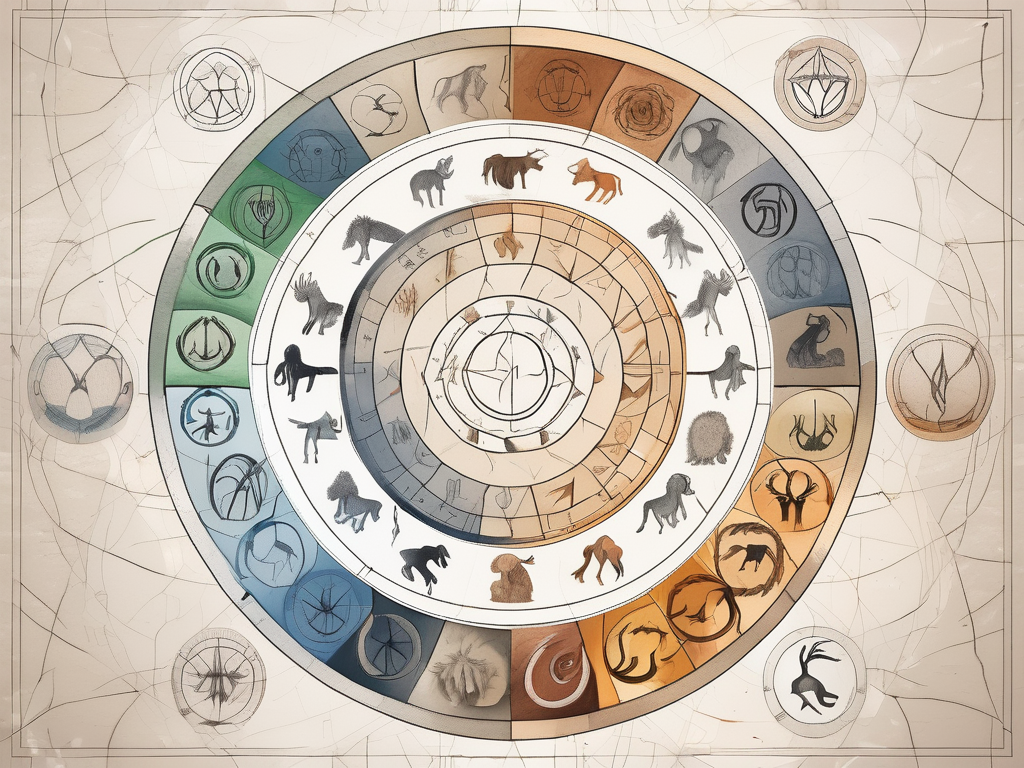Stoicism, an ancient philosophy developed in Greece, has gained renewed interest in recent years as people seek ways to navigate life’s challenges and find peace within themselves. This guide will explore the principles of Stoicism, its historical origins, and provide practical steps to incorporate it into your daily life. By cultivating inner resilience and emotional equanimity, you can live a more balanced and fulfilling existence.
Understanding Stoicism: A Brief History
Before diving into the principles of Stoicism, it’s essential to understand its historical roots and the philosophical foundations on which it was built.
Stoicism originated in ancient Greece around the 3rd century BC and was further developed by Roman philosophers such as Seneca, Epictetus, and Marcus Aurelius. The Stoics believed in living a virtuous life in harmony with nature.
The Philosophical Roots of Stoicism
Stoicism, with its emphasis on virtue and living in accordance with nature, drew inspiration from various philosophical traditions of ancient Greece. One of its primary influences was the philosophy of Cynicism, which advocated for living a simple and self-sufficient life. The Cynics believed that true happiness could be achieved by detaching oneself from material possessions and societal expectations.
Another significant influence on Stoicism was the philosophy of Socrates, who emphasized the importance of self-examination and the pursuit of wisdom. Socrates believed that the key to a fulfilling life was to constantly question and challenge one’s beliefs, leading to personal growth and self-improvement.
Building upon these foundations, the Stoics developed their unique philosophy, which aimed to provide individuals with practical guidance on how to live a virtuous and meaningful life.
Key Stoic Philosophers and Their Teachings
To grasp the essence of Stoicism, it’s important to explore the teachings of influential Stoic philosophers.
Seneca, a prominent Roman Stoic, emphasized the importance of self-control, reason, and moral virtue in leading a meaningful life. He believed that by cultivating these qualities, individuals could attain tranquility and inner peace, even in the face of adversity. Seneca’s writings, such as “Letters from a Stoic,” continue to inspire and guide individuals seeking to incorporate Stoic principles into their lives.
Epictetus, a former slave turned philosopher, emphasized the distinction between what is within our control and what is not. According to Epictetus, true happiness lies in accepting the things we cannot control and focusing only on what is within our power. He believed that by aligning our desires and expectations with the natural order of the universe, we can achieve a state of tranquility and freedom from unnecessary suffering. Epictetus’ teachings, recorded in his famous work “Discourses,” offer practical advice on how to cultivate resilience and maintain a calm mind in the face of life’s challenges.
Marcus Aurelius, the Roman Emperor, stressed the importance of self-reflection and the pursuit of wisdom. His book, “Meditations,” provides valuable insights into the Stoic philosophy. In it, Marcus Aurelius reflects on his own struggles and offers guidance on how to live a virtuous life. He encourages individuals to constantly examine their thoughts and actions, striving to align them with the principles of reason and virtue. Marcus Aurelius’ writings continue to serve as a source of inspiration for those seeking to cultivate inner strength and moral integrity.
By studying the teachings of these influential Stoic philosophers, we can gain a deeper understanding of the principles and practices that form the foundation of Stoicism. Their wisdom continues to resonate with individuals seeking guidance on how to navigate the complexities of life and find lasting fulfillment.
The Core Principles of Stoicism
Stoicism is built upon a set of core principles that guide its practitioners in cultivating inner resilience and emotional equanimity. These principles provide a framework for living a virtuous and meaningful life, even in the face of adversity.
At the heart of Stoicism are the four cardinal virtues: wisdom, courage, justice, and temperance. These virtues serve as guiding principles for Stoics, helping them navigate the complexities of life and make decisions that align with their values.
The Four Virtues of Stoicism
The Stoics believed in four cardinal virtues, each of which played a crucial role in the pursuit of a virtuous life:
- Wisdom: Wisdom is the cornerstone of Stoic philosophy. It involves the pursuit of knowledge and understanding of the world and oneself. Stoics value wisdom as a means of gaining insight into the nature of reality and making informed decisions.
- Courage: Courage is the ability to face difficulties with bravery and resilience. Stoics recognize that life is filled with challenges and setbacks, and courage enables them to confront these obstacles head-on, without succumbing to fear or despair.
- Justice: Justice is a fundamental virtue in Stoicism, emphasizing the importance of treating others fairly and acting in accordance with moral principles. Stoics believe that justice is essential for maintaining social harmony and fostering meaningful relationships.
- Temperance: Temperance involves exercising self-control and moderation in all aspects of life. Stoics understand the dangers of excess and strive to find balance in their desires and actions. By practicing temperance, they avoid the pitfalls of overindulgence and maintain a sense of inner harmony.
The Dichotomy of Control in Stoicism
Stoicism teaches that some things are within our control, while others are not. This concept, known as the dichotomy of control, is a central tenet of Stoic philosophy. By understanding and accepting this dichotomy, Stoics can find inner peace and avoid unnecessary suffering.
According to Stoicism, our thoughts, actions, and attitudes are within our control. We have the power to choose how we perceive and respond to external events. By focusing our energy and attention on what is within our control, we can cultivate a sense of agency and resilience.
On the other hand, external events, such as the actions of others or the natural world, are beyond our control. Stoics recognize that trying to control these external factors is futile and only leads to frustration and disappointment. Instead, they advocate for accepting the inevitability of these events and adapting their mindset accordingly.
By embracing the dichotomy of control, Stoics free themselves from the burden of trying to control the uncontrollable. They find solace in knowing that their inner state is not dependent on external circumstances, but rather on their own thoughts and actions.
The Role of Stoicism in Cultivating Inner Resilience
In times of adversity, Stoicism offers valuable insights and practical techniques to help navigate the challenges and build resilience.
Stoicism, an ancient philosophy founded in Athens by Zeno of Citium in the early 3rd century BCE, has long been regarded as a practical guide to living a virtuous and fulfilling life. Its teachings have stood the test of time and continue to resonate with individuals seeking inner strength and resilience.
Embracing Adversity: A Stoic Perspective
Stoics view adversity as an opportunity for personal growth and character development. By embracing challenges and reframing them as opportunities for learning and improvement, we can develop inner strength and resilience.
When faced with adversity, Stoics encourage us to shift our perspective and see obstacles as stepping stones on the path to self-improvement. Rather than dwelling on the negative aspects of a difficult situation, Stoicism teaches us to focus on what we can control and take proactive steps towards finding solutions.
By adopting this Stoic perspective, we can transform adversity into a catalyst for personal growth. Each challenge becomes an opportunity to cultivate virtues such as courage, wisdom, and resilience.
Building Mental Fortitude through Stoic Practices
Stoicism provides various practices to cultivate mental fortitude and strengthen our capacity to deal with life’s ups and downs.
Meditation and mindfulness are core practices in Stoicism. Taking time each day to reflect on our thoughts and emotions allows us to observe them without judgment and cultivate a sense of inner calm.
Through meditation, we can develop the ability to detach ourselves from external circumstances and find peace within. By focusing on the present moment and accepting it as it is, we can reduce stress and anxiety, enhancing our overall well-being.
Journaling is another valuable Stoic practice. Putting our thoughts and experiences onto paper helps us gain clarity, process our emotions, and gain new insights into ourselves and the world around us.
By journaling, we create a space for self-reflection and self-discovery. We can explore our thoughts, identify patterns, and uncover hidden beliefs or biases that may be holding us back. This process of introspection allows us to make conscious choices and align our actions with our values.
Furthermore, Stoicism encourages us to practice negative visualization, a technique where we imagine worst-case scenarios to prepare ourselves mentally and emotionally for potential hardships. By envisioning and mentally rehearsing challenging situations, we can develop the resilience and fortitude needed to face them head-on.
Stoicism also emphasizes the importance of community and social connections. By cultivating meaningful relationships and engaging in acts of kindness and compassion, we not only strengthen our support networks but also foster a sense of belonging and purpose.
In conclusion, Stoicism offers a comprehensive framework for cultivating inner resilience. By embracing adversity, practicing mindfulness and journaling, and nurturing social connections, we can develop the mental fortitude needed to navigate life’s challenges with grace and resilience.
Achieving Emotional Equanimity with Stoicism
One of the key goals of Stoicism is achieving emotional balance by cultivating a healthy relationship with our emotions. Stoics believe that by understanding and managing our emotions effectively, we can lead a more fulfilling and tranquil life.
Stoicism offers practical techniques to manage and regulate our emotions effectively. These techniques are not about suppressing or denying our emotions, but rather about developing a sense of control over them.
Stoic Techniques for Emotional Balance
One technique is negative visualization, which involves imagining the loss of something or someone we cherish. This practice helps us develop gratitude for what we have and prepares us to handle future challenges with equanimity. By contemplating the impermanence of things, we learn to appreciate the present moment and cultivate a sense of contentment.
Another technique is self-talk, where we consciously challenge our negative thoughts and replace them with more positive and rational ones. By reframing our perspective, we can cultivate a healthier emotional state. This practice allows us to question our automatic reactions and choose more constructive responses.
Stoics also emphasize the importance of practicing mindfulness. By being fully present in the moment and observing our thoughts and emotions without judgment, we can develop a greater understanding of ourselves. Mindfulness helps us detach from our emotions and view them from a more objective standpoint.
The Stoic Approach to Handling Negative Emotions
Stoicism teaches that negative emotions are a result of our judgments and attachment to external events. By recognizing that our emotions are within our control, we can choose how to respond to them. Stoics believe that by adopting a philosophical mindset, we can cultivate emotional resilience and maintain inner tranquility.
Stoics practice emotional detachment by reminding themselves that external events are indifferent to our well-being. They understand that it is not the events themselves that cause distress, but rather our interpretation and reaction to them. By embracing this mindset, we can detach our emotions from circumstances and maintain a sense of inner calm.
Furthermore, Stoics encourage the practice of self-reflection and self-examination. By regularly examining our thoughts and emotions, we can identify any irrational beliefs or attachments that may be causing unnecessary suffering. This self-awareness allows us to make conscious choices and respond to situations in a more balanced and rational manner.
In conclusion, Stoicism offers valuable insights and techniques for achieving emotional equanimity. By cultivating a healthy relationship with our emotions, practicing techniques such as negative visualization and self-talk, and adopting a philosophical mindset, we can navigate life’s challenges with greater resilience and inner peace.
Practical Steps to Incorporate Stoicism into Daily Life
Stoicism is not a theoretical philosophy but a way of life. Here are some practical steps to incorporate Stoicism into your daily routine:
Mindfulness and Reflection: Stoic Daily Exercises
Start each day with a few moments of mindfulness and reflection. Set intentions for the day, contemplate the virtues you want to embody, and reflect on your actions and behavior.
Throughout the day, practice observing your thoughts and emotions without judgment. Take time to pause and reflect before reacting, allowing yourself to respond from a place of inner calm and wisdom.
Stoicism in Decision Making and Problem Solving
When faced with difficult decisions or challenges, Stoicism can provide guidance.
Consider the Dichotomy of Control and focus on what is within your power to influence. Ask yourself what actions align with the virtues of wisdom, courage, justice, and temperance. Make your decisions based on these principles and detach from the outcomes beyond your control.
By adopting a Stoic mindset in decision-making and problem-solving, you can approach challenges with clarity, logic, and a sense of inner peace.
In conclusion, Stoicism offers a valuable framework for cultivating inner resilience and emotional equanimity. By understanding its historical roots, embracing its core principles, and incorporating Stoic practices into your daily life, you can navigate life’s challenges with greater wisdom and lead a more fulfilling existence. So, embrace Stoicism and embark on a journey towards inner peace and a vibrant, resilient life!












